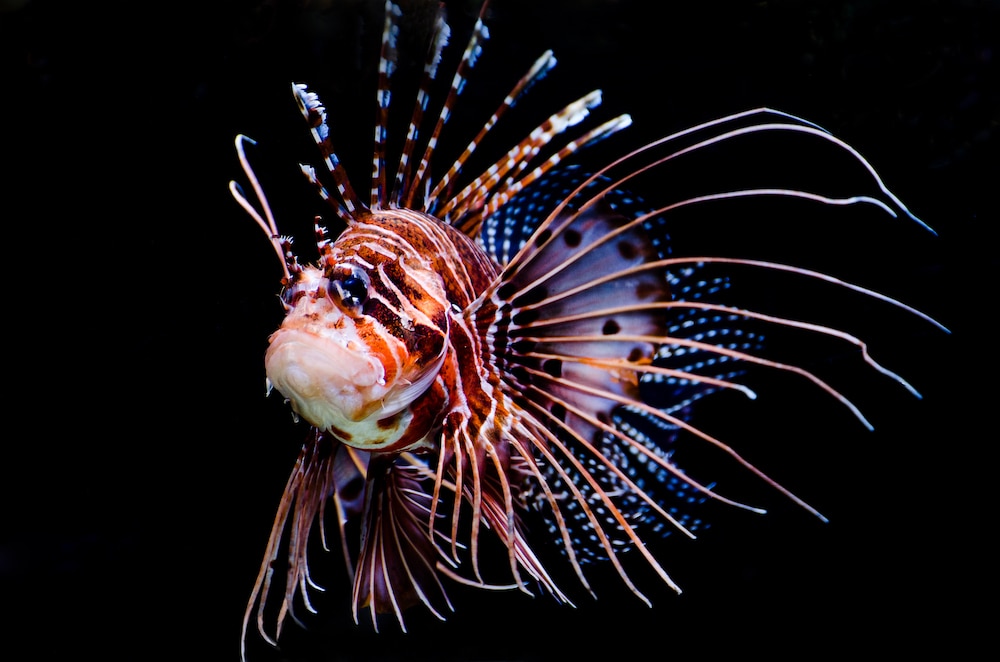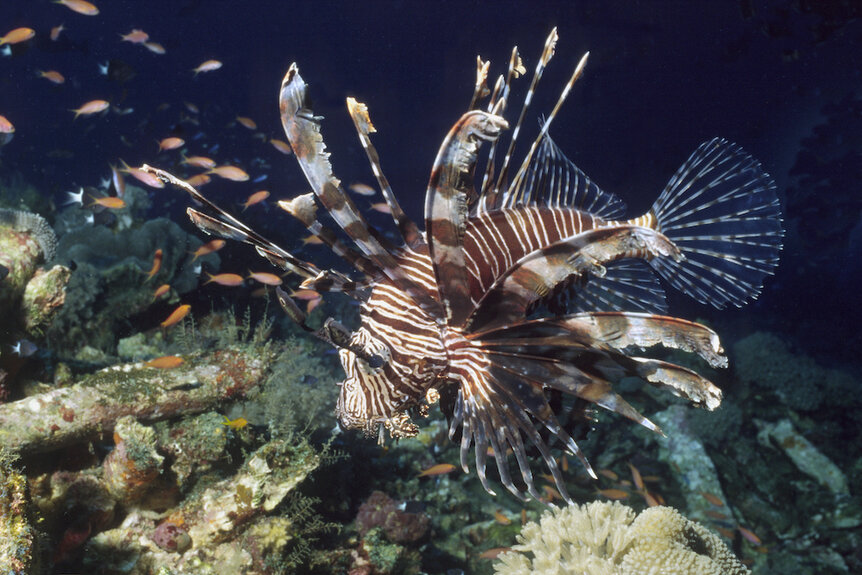Create a free profile to get unlimited access to exclusive videos, sweepstakes, and more!
Lionfish are the Michael Myers of the sea, hunting prey through slow and steady pursuit
All they need is a tiny mask.

Jason Voorhees proves difficult to kill mostly because he’s already dead. Freddy Krueger has the benefit of invading your dreams when you’re at your most vulnerable, and Ghostface has the ability to be in multiple places at once because he’s actually several people. Michael Myers, by contrast, is ostensibly a normal human person, without any of the supernatural cheat codes or dirty tricks of other slashers. Still, in every Halloween movie, he appears to have the uncanny ability of always being right behind you, even though he’s perpetually walking.
His victims run for their lives, they trip, they get up… and always, there he is, slowly walking toward their imminent demise. It can feel almost laughable. Escaping Michael Myers should be as simple as maintaining a moderate jog for more than a few minutes. And yet, there’s good evidence that this sort of measured but persistent pursuit strategy works, not just in the movies but in the real world.
Scientists from the University of California, Irvine recently studied the hunting tactics of the red lionfish and found that they prefer slow and steady pursuit when chasing down prey animals which are faster than they are. Their findings were published in the Proceedings of the Royal Society B.
Lionfish are well known for their bombastic appearance which includes loud coloration and large, splayed fins, some of which harbor venomous spines. They’re the sort of fish which would stand out even at the Met Gala. Their morphology is a benefit when in coral reef ecosystems, allowing them to blend in with the background scenery. In those settings, lionfish tend to rely on ambush hunting to capture prey who swim too closely without realizing the danger. That would be good enough if lionfish stayed on the reef, but they don’t. Instead, they often hunt in the open water where their bodies stick out like a flashing neon sign. That got researchers wondering how they managed to capture prey in the water column when, by all accounts, their typical prey are considerably faster than they are, and they can absolutely see them coming.
To find out, researchers placed individual lionfish in a tank alongside a faster prey fish, Chromis viridis. All things being equal, C. viridis shouldn’t have any trouble evading capture due to the fact that they’re roughly twice as fast as the red lionfish. Yet, the lionfish succeeded in capturing prey in about 61% of all experiments.
Once both fish were in the tank, scientists analyzed their movements using custom software to build a model of their interactions. Once the lionfish locked on to their target, they followed them utilizing pure pursuit, meaning they did not anticipate the future location of their prey and instead continually followed them based on their current location.
It seems that the secret to their success is that they just keep swimming. While the speed of the lionfish did exhibit some variability, they never stopped moving toward their prey. By contrast, prey animals exhibited intermittent bursts of rapid swimming followed by rest periods. It’s those rest periods which allowed the lionfish to close the distance over time, despite having a lower overall top speed.
Eventually, the distance between predator and prey closed sufficiently, to about 7 centimeters, at which time the lionfish would strike. This tactic works more often than not, with about three quarters of all strike attempts being successful. Their success hinges on the fact that while prey animals are faster in terms of raw speed, they spend more time resting than their predators. Slow and steady appears to be better than fast and inconsistent.
So, if you ever find yourself fleeing Michael Myers, or any persistent predator for that matter, don’t stop moving.



























